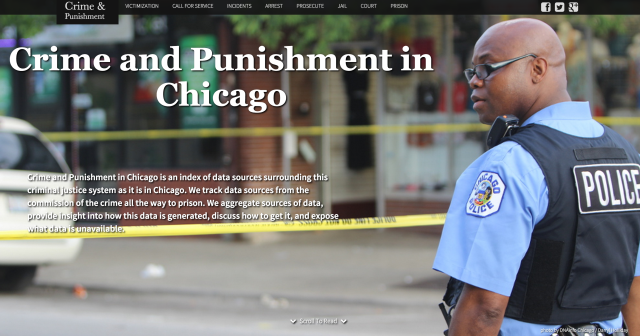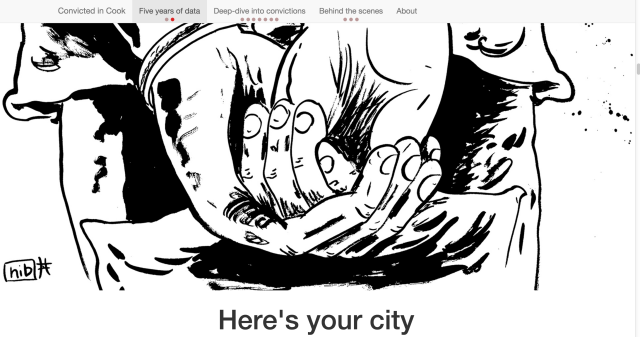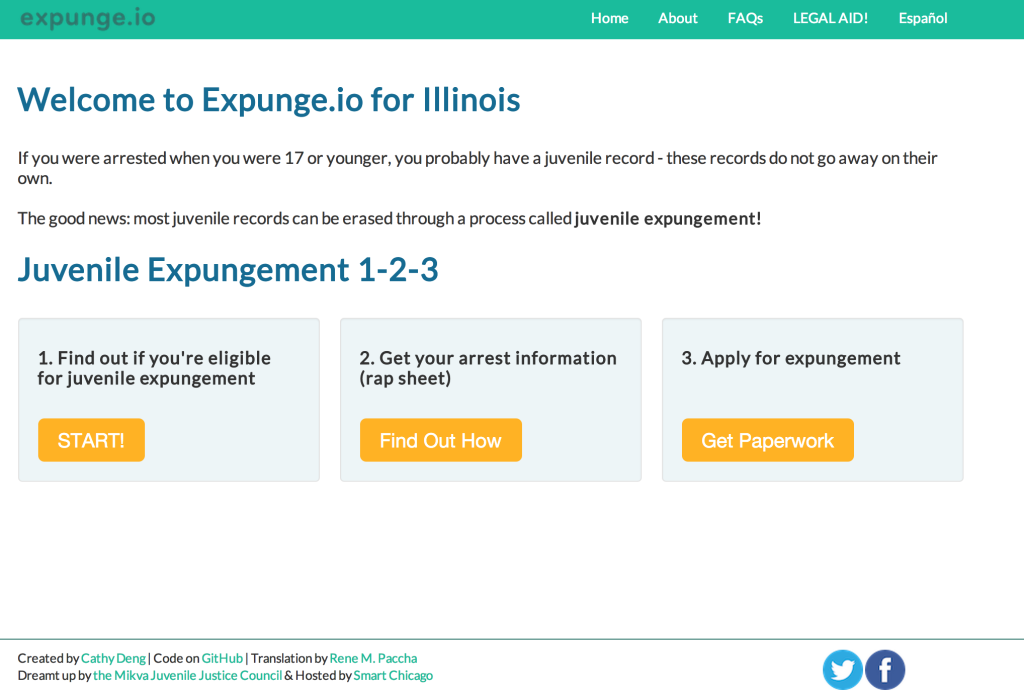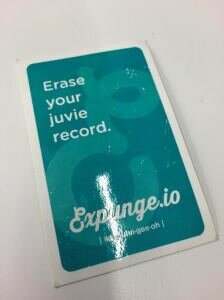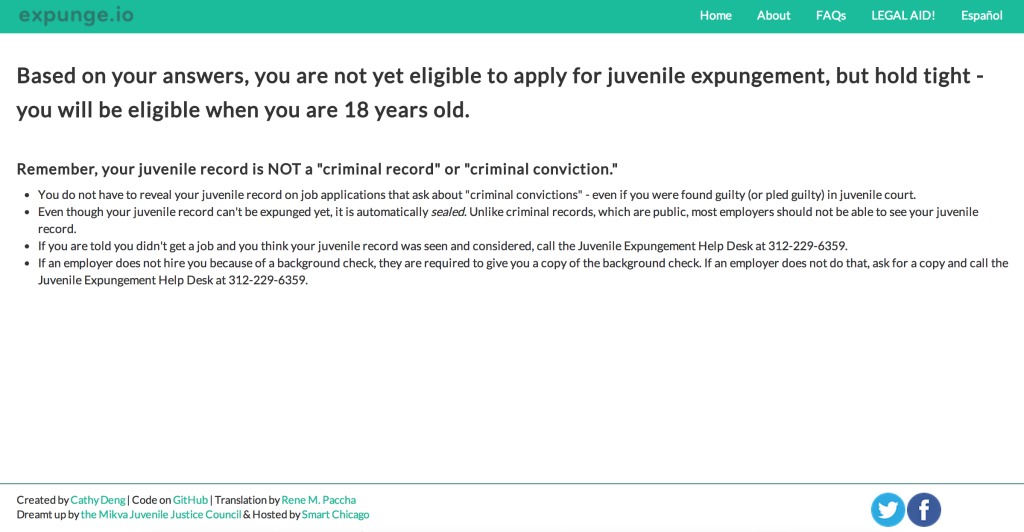 As part of our continued work in connection with our Expunge.io product, we secured a fingerprint terminal to be stationed at the Cook County Juvenile Center. This is one of the ways we determined, with our partners at LAF, Cabrini Green Legal Aid, the Juvenile Justice Division of the Circuit Court of Cook County, the Clerk’s Office and the Cook County/Juvenile Probation and Court Services, that we could make the expungement process work more efficiently.
As part of our continued work in connection with our Expunge.io product, we secured a fingerprint terminal to be stationed at the Cook County Juvenile Center. This is one of the ways we determined, with our partners at LAF, Cabrini Green Legal Aid, the Juvenile Justice Division of the Circuit Court of Cook County, the Clerk’s Office and the Cook County/Juvenile Probation and Court Services, that we could make the expungement process work more efficiently.
The fingerprint terminal became available on March 15 and is being used and create a better process for individuals looking to expunge their juvenile records. By having the terminal in the same location as the Juvenile Expungement Help Desk, we hope to drive more people to expunge their records.
Current process can be cumbersome
If you have been arrested in Chicago, you can get your arrest record for free at the Records and Services Division of the Chicago Police Department located at 3510 S. Michigan Ave every Monday through Friday from 8:00 – 12:00.
Once you have your rap sheet, then you must fill out three forms: a petition to expunge juvenile arrest record, a notice, and an order of expungement. Once these forms are filed you will need to submit the forms to the Court Clerk’s Office. Then you will receive a court date and you will have to come back to attend court at the Cook County Juvenile Center.
The Juvenile Expungement Help Desk, located in the Cook County Juvenile Center, is the best place to go to get help in filling out these forms for free. They are also able to assist in filing fee waivers for their clients.
We understood when working on this issue that there were some issues with the current process:
- Visiting the Chicago Police Department and then going to the Cook County Juvenile Center, located at 1100 S. Hamilton Ave, can be a cumbersome experience
- We also heard that getting a rap sheet is the most important step before seeking help at the Juvenile Expungement Help Desk, but some individuals go to the help desk first
Fingerprint terminal at the Cook County Juvenile Center adds another option for obtaining rap sheet
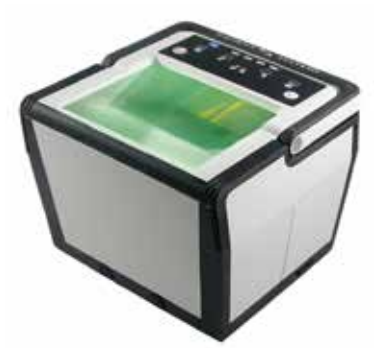 Smart Chicago assisted in securing the Cogent FBI-Certified USB Fingerprint Scanner 3M CS500e for the Cook County Juvenile Center. The fingerprint terminal will help individuals on their first step of getting their rap sheets.
Smart Chicago assisted in securing the Cogent FBI-Certified USB Fingerprint Scanner 3M CS500e for the Cook County Juvenile Center. The fingerprint terminal will help individuals on their first step of getting their rap sheets.
The biggest limitation the turnaround time to receive the rap sheets that last from a couple of days to a couple of weeks. The lawyers of the Juvenile Expungement Help Desk are working on a release form so that individuals can release their rap sheets to the lawyers at the Help Desk and not have to come back in to fill out the petition paperwork.
The new fingerprint terminal at the Cook County Juvenile Center will allow individuals to go through every step of the process of getting their records expunged, right there at the Cook County Juvenile Center. Individuals will need to visit the information desk and then be directed by a staff member to the fingerprint terminal. A probation officer will be LEAD-Certified and available to operate the fingerprint terminal.
LAF and CGLA are working on a process in which individuals can release their rap sheet directly to the lawyers at the Juvenile Expungement Help Desk. They will be able to complete and submit the petition paperwork on their behalf.
ICLEAR System
After on-going discussions with the Chicago Police Department, trained staff at the Cook County Juvenile Center also have access to the ICLEAR system, which would assist with receiving a rap sheet immediately for some people.
Members of the Chicago Police Department developed a technology integration application called Citizen and Law Enforcement Analysis and Reporting (CLEAR). CLEAR provides an unprecedented amount of information about criminal offenders in Chicago and Cook County. CLEAR makes this data available throughout the State and our neighboring states.
Access to the ICLEAR system allows staff at the Cook County Juvenile Center to use a name-based search to find rap sheets and print them immediately. There are some limitations of this system, since it cannot find records of individuals arrested outside of Chicago, arrested by multiple agencies, or who have older arrests. These individuals will still be able to use the fingerprint terminal to gain access to their rap sheets.
There is still more to come as we figure out this work, but these steps are getting us closer to an efficient process to get more juvenile records expunged.
